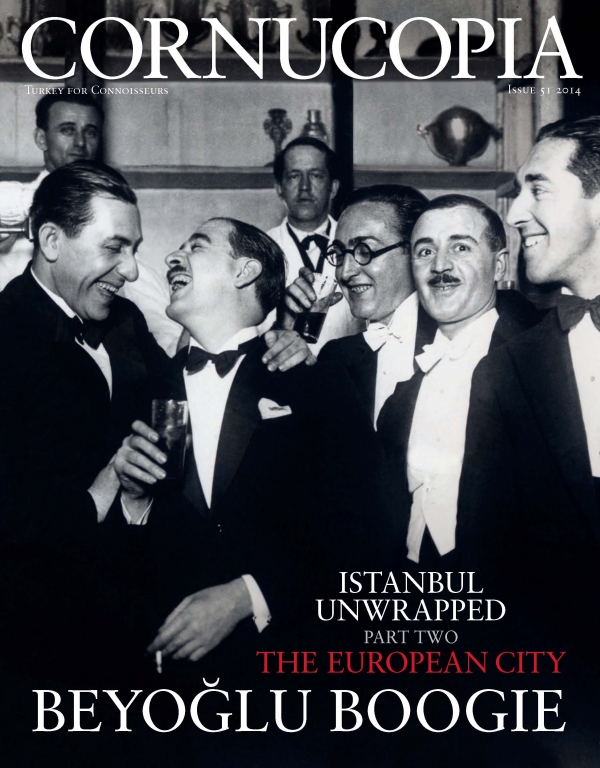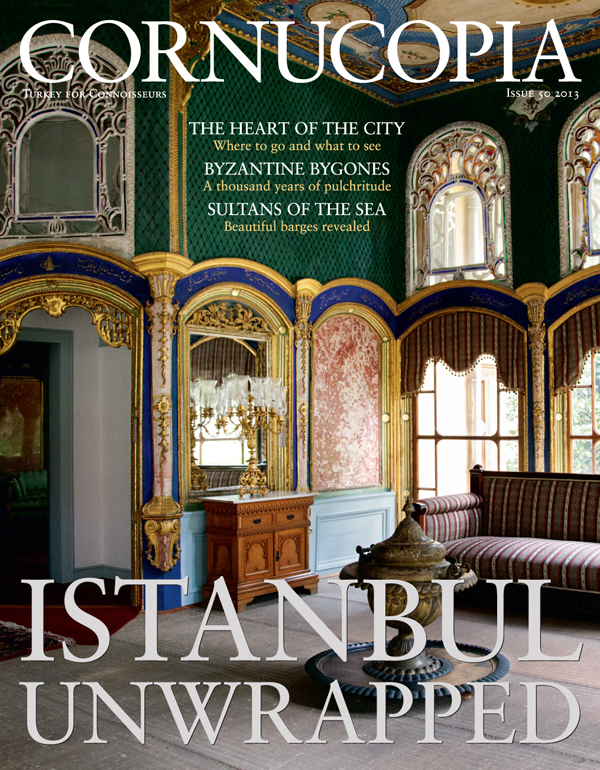Buy or gift a stand-alone digital subscription and get unlimited access to dozens of back issues for just £18.99 / $18.99 a year.
Please register at www.exacteditions.com/digital/cornucopia with your subscriber account number or contact subscriptions@cornucopia.net
Buy a digital subscription Go to the Digital EditionFrom the art capitals of the world, a round-up of Islamic and Orientalist art
THE IBRAHIM PAŞA SARAY’S TURKISH CARPETS
Featuring one of the most important displays to date of early Turkish masterpieces, this exhibition includes many exceptional mosque carpets rescued from storage for the show. Scholars will welcome this chance to see textiles familiar only from books. The pieces will be joined by similarly rare Turkish rugs from museums in Berlin and Budapest. Related paintings from Warsaw and Berlin will provide historical context and permit more accurate dating. The glorious Uşak (above left) from the host museum has a distinctive scale pattern also found on armour and Iznik pottery. Two other Turkish museums are contribution, the Vakıflar, just across the Hippodrome, and Mevlana Museum in Konya.
DENMARK’S EXHIBITIONS OF ISLAMIC ART AND CULTURE
Three Danish museums are cooperating this summer to portray different aspects of Islamic culture through Denmark’s rich store of Islamic art and artefacts. The Arabian Journey, at the Moesgard Museum, in Jutland, is named after an expedition despatched by Frederick V in 1761. Sultan, Shah and Great Mughal, at the National Museum, Copenhagen, examins art, worship and daily life across the Islamic world. On display is the wonderful 17th-century miniature of Mustafa III (above). By the Light of the Crescent Moon, at the David Collection, also in the capital, views the Near East through the eyes of 19th-century artists and writers, including Hans Christian Anderson.
A MARRIAGE OF ARTISTIC PARTNERS
The watercolour of a winsome Istanbul aristocrat in a diaphanous yashmak was painted by the underestimated court artist Fausto Zonaro. It came up this spring in Gros et Lettrez’s Orientalist sale in Paris, the only watercolour in a folio of photogravures of Zonaro oil paintings bound in sumptuous morocco. The folio, Devri Se’adet ou Stamboul, porte du bonheur scènes de la vie turque, which fetched FF130,000, was issued in an edition of 300, each with an original watercolour. The text is by Adolphe Thalasso, writer and poet, who described Zonaro in his book L’Art d’Ottoman: les peintres de Turquie as one of the greatest Orientalist painters. Born in Padua in 1854, Zonaro used small brushstrokes without mixing colours, influencing his Italian contemporaries. In the 1880s, he moved to Paris, where he met the Impressionists. Returning to Italy in 1890, he married, and, at the suggestion of his wife, Elisa, set off at once with her to Istanbul – she had visited the city after reading De Amici’s Constantinopoli and knew her husband would be bewitched by the city. By 1891 the couple were residing in a wooden house near Taksim…
The traditional tent of Central Asian nomads is a pleasure dome fit for the gods, says Tim Beddow
Hekimbaşı Salih Efendi was the last Chief Physician to the Ottoman court, a scholar and a reformer. But plants were his passion. His gardens have gone, but the house lives on. By Patricia Daunt. Photographs: Simon Upton
The Victorian painter Frederick Leighton went to extraordinary lengths to create his pink, black, blue and gold domed Arab Hall in London. By Caroline Juler with photographs by Fritz von der Schulenburg
Süleyman the Magnificent’s city within a city above the Golden Horn has come to house one of the world’s finest collections of books and ancient manuscripts.
When the intrepid Lady Mary Wortley Montagu travelled with her husband’s embassy to Turkey in 1716, she recorded the minutiae of life on the road and in her ‘new world’. . Remarkably open-minded, her innocent observations inspired Ingres to paint some of the greatest erotic masterpieces of the Romantic movement.
‘There are not so many places left where magic reigns without interruption,’ wrote Freya Stark in The Lycian Shore, ‘and of all those I know, the coast of Lycia was the most magical.’ Barnaby Rogerson went with Rose Baring and four-month-old Molly in search of enchantment. Photographs by Faruk Akbas
Its rich, subtle flavour lends itself to a multitude of melting concoctions. Berrin Torolsan traces the story of this most lustrous fruit and serves up an irresistible feast.
More cookery features
In the early nineteenth century the redoubtable Englishman John Barker built a country retreat in the province of Hatay, close to the present-day Syrian border, planting his estate with exotic fruit trees, watching over the British Empire’s Indian Mail, and entertaining guests with music on the mechanical organ. David Morray looks back on the golden age of ‘Suedia Hall’




The London Academy of Ottoman Court Music, with Emre Araci



Cornucopia works in partnership with the digital publishing platform Exact Editions to offer individual and institutional subscribers unlimited access to a searchable archive of fascinating back issues and every newly published issue. The digital edition of Cornucopia is available cross-platform on web, iOS and Android and offers a comprehensive search function, allowing the title’s cultural content to be delved into at the touch of a button.
Digital Subscription: £18.99 / $18.99 (1 year)
Subscribe now